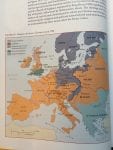Over the past week, our class has split into groups tasked with the goal of recreating/updating a preexisting physical map in a digital form. We’ve learned about data formatting, digital tools, (Google Maps and ArcGIS online) important stylistic and aesthetic considerations, and even the moral and ethical considerations of map making. At the beginning, we were given an example map and asked how we, at first individually and then with a partner, might update or improve it and relate it more directly to music history. At first, I thought it might be interesting to see what the map looked like if it included 16th century publishing houses. This ended up being perfect, as my partner, Jessie, chose to include various compositions by notable composers of the time. Then after some more researching and fitting (religion representing) polygons as best we could to the countries and coastlines of Europe, our final draft of our first map came to be. (Go ahead and take a moment to check it out. Click around on the various markers to see the names of publishers and pieces, and even listen to some recordings. I’ll wait!)
All things considered, I would say this first map making exercise was quite successful. By going through the entire process of researching, collecting and formatting data, and then mapping said data, I was able to gain a much greater sense of perspective on the process as a whole, which I believe will be quite useful when we (later today) start working on our main research and mapping project – H.T. Burleigh. Furthermore, this miniature mapping project has given me a window into the excitement that accompanies completing, or at least reaching an acceptable stopping point on, a map and seeing and exploring the product. I only imagine this effect will be heightened even more when the data is not just my own and one other’s, but many people’s combined efforts. I can only imagine that exploring such a map and all of it’s intricacies will be incredibly engaging. And hopefully, you too dear reader will explore such a map, but without needing to do all the hard work researching. What, then, do you need to do? Simply keep reading!

You must be logged in to post a comment.